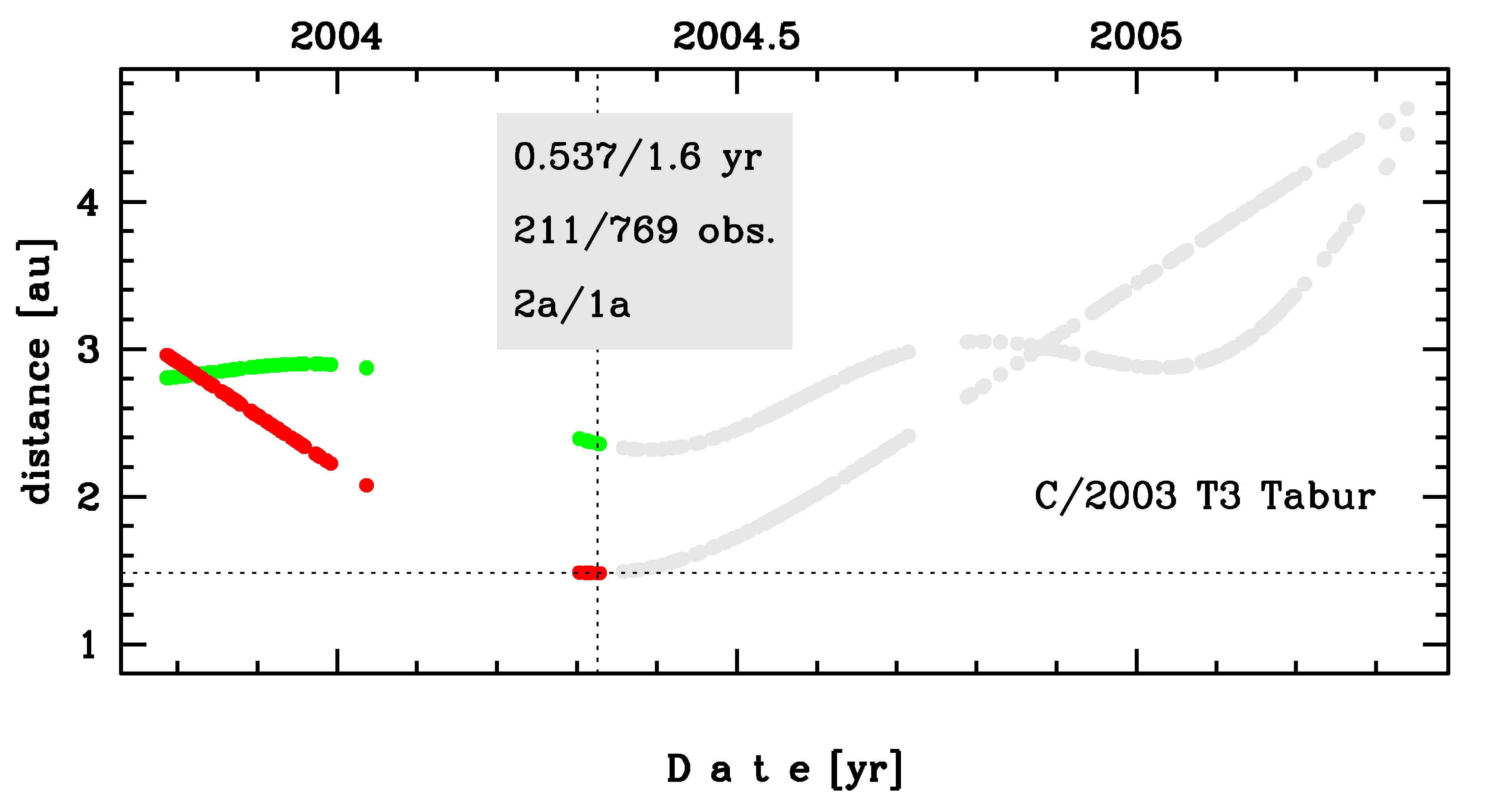C/2003 T3 Tabur
more info
Comet C/2003 T3 was discovered on 14 October 2003 by Vello Tabur (Australian Capital Territory); that is 6.5 months before its perihelion passage. It was observed until 3 May 2005.
Comet had its closest approach to the Earth on 22 May 2004 (2.319 au), about 3 weeks after its perihelion passage.
Preferred solution given here is based on data spanning over 1.55 yr in a range of heliocentric distances: 2.968 au – 1.481 au (perihelion) – 4.63 au, however NG solution based on pre-perihelion data (pn) is also adequate for past calculations.
This Oort spike comet suffers large planetary perturbations during its passage through the planetary system; these perturbations lead to a significantly more tight future orbit with semimajor axis of about 1,400 au.
See also Królikowska 2020.
Comet had its closest approach to the Earth on 22 May 2004 (2.319 au), about 3 weeks after its perihelion passage.
Preferred solution given here is based on data spanning over 1.55 yr in a range of heliocentric distances: 2.968 au – 1.481 au (perihelion) – 4.63 au, however NG solution based on pre-perihelion data (pn) is also adequate for past calculations.
This Oort spike comet suffers large planetary perturbations during its passage through the planetary system; these perturbations lead to a significantly more tight future orbit with semimajor axis of about 1,400 au.
See also Królikowska 2020.
| solution description | ||
|---|---|---|
| number of observations | 211 | |
| data interval | 2003 10 14 – 2004 04 29 | |
| data arc selection | data generally limited to pre-perihelion (PRE) | |
| range of heliocentric distances | 2.96 au – 1.48 au (perihelion) – 1.48 au | |
| detectability of NG effects in the comet's motion | comet with determinable NG~orbit | |
| type of model of motion | GR - gravitational orbit | |
| data weighting | YES | |
| number of residuals | 419 | |
| RMS [arcseconds] | 0.43 | |
| orbit quality class | 1b | |
| orbital elements (heliocentric ecliptic J2000) | ||
|---|---|---|
| Epoch | 2004 04 25 | |
| perihelion date | 2004 04 28.99745157 | ± 0.00078876 |
| perihelion distance [au] | 1.48112697 | ± 0.00000922 |
| eccentricity | 0.99988920 | ± 0.00001320 |
| argument of perihelion [°] | 43.769312 | ± 0.000651 |
| ascending node [°] | 347.058541 | ± 0.000057 |
| inclination [°] | 50.443639 | ± 0.000081 |
| reciprocal semi-major axis [10-6 au-1] | 74.80 | ± 8.91 |
